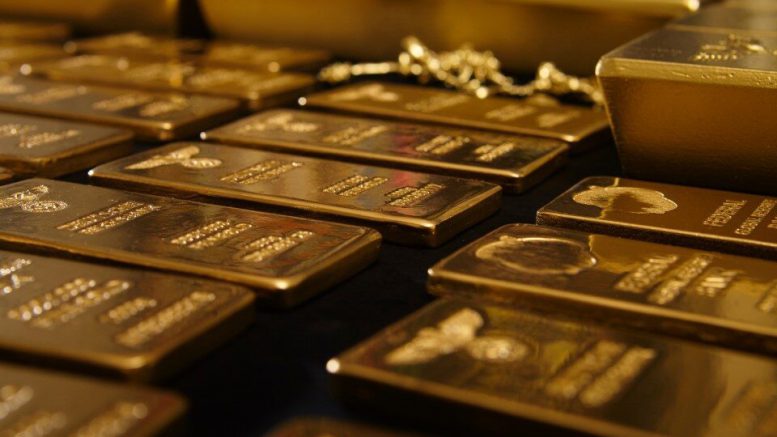Gold demand increased 3% during the first quarter because of buying by central banks, Asian investors and jewellers, the World Gold Council says in a new report.
Purchases rose to 1.23 million tonnes of gold during the year’s first three months compared with the year-ago period, the London-based industry group said on Tuesday. The total included over-the-counter buys (deals between two transactors); while the amount from gold exchanges only fell 5% to 1.1 million tonnes.
Central bank buying hit a first-quarter record of 290 tonnes led by China, India, and Turkey. China marked a 17th consecutive monthly increase as official gold holdings hit 2,262 tonnes while the Reserve Bank of India already exceeded last year’s annual net purchases, according to the report and analysis by BMO Capital Markets. Jewelry demand was better than expected, falling just 2% from last year’s period despite then-record high gold prices in March.
The report shows an increasing divide between West and East investment tactics as the weakness in China’s domestic property and equity markets strengthens investor interest, BMO said in a note on Tuesday.
“Once again, emerging markets dominated central bank purchases and investment demand, as the push to de-dollarize continues,” Colin Hamilton, head of BMO global commodities research said. “Europe and United States-listed exchange traded funds recorded a 4% drop in holdings, while Asian listed funds registered a fourth consecutive inflow, adding a further 10 tonnes in the first quarter.”
De-dollarizing refers to some countries keen to replace their holdings of greenbacks – which can be subject to economic sanction that is often called the weaponization of the dollar – with non-denominational bullion that has few strings attached. The push by some central banks regardless of the spot price of gold could add a clockwork annual bump in purchases, Hamilton said.
East vs. West
Investors in Eastern markets are usually more responsive to prices and wait for a decline before buying, while Western investors have historically been attracted to a rising price and tend to buy into the rally, Louise Street, senior markets analyst at the World Gold Council, said a release with the report.
“We saw those roles reversed with investment demand in markets such as China and India growing considerably as the gold price surged,” Street said. “Should the price level off in the coming months, some price-sensitive buyers may re-enter the market and investors will continue to look to gold for a safe haven asset as they seek clarity around rate cuts and election results.”
The spot gold price climbed to an all-time high of US$2,394.95 on April 21, according to Mining.com, despite traditional headwinds of a strong U.S. dollar and a climate of high interest rates, she said.
The spot gold price was $2,294.19 an oz. on Tuesday, according to Mining.com, its lowest level since April 4. The U.S. Federal Reserve is not expected to cut interest rates when it meets on Wednesday. Higher interest rates for longer would depress the price of gold when investors can find somewhere else to earn a return.
Still, the spot price could hit US$3,000 an oz. this year, according to Bloomberg Intelligence.
“The precious metal’s upward trajectory could be gaining fuel from Chinese government bond yields falling toward those in Japan and risks of reversion in the elevated U.S. stock market,” senior commodity strategist Mike McGlone said April 26.
Jewelry, industry
For Asian jewellers, the quarter marked a before-and-after spot gold prices rose rapidly in early March. Chinese demand fell 6% to 184 tonnes from a first quarter last year that was comparatively strong, BMO said. Indian gold demand rose 4% to 95 tonnes, helped by a stronger economy as rural demand strove to match urban areas.
Industrial demand for gold jumped 10% from the year-ago quarter to 79 tonnes driven by recovering electronics sectors and inventory restocking in the wireless sector, the council said. Part of the demand is for gold on expensive computer chips used in artificial intelligence. Overall electronics demand rose 13% compared with a year earlier to 64 tonnes.
“We do expect higher prices will likely temper demand in price sensitive Asian countries for the remainder of 2024 and incentivize gold recycling,” Hamilton said of the jewelry segment. “While we feel some of the narrative around AI metals impact is somewhat overdone at present, we anticipate incremental growth in gold technology demand.”


What emblem is stamped on those bars?